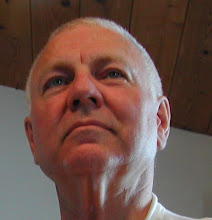2010-05-29
Baker Lake Uranium
.
I caused a bit of a storm a year ago with some tough comments on generating electricity in Nunavut. I should have spoken to the people involved first and made sure they understood what I intended before lambasting their ideas in public.
My mistake, but theirs too. None of us distinguished sufficiently between electricity and the methods we use to generate it.
During that debate, my every mention of hydro generation as a way of extracting energy from gravity was interpreted as advocating a particular community's least preferred reservoir location. Every mention of wind generation was interpreted as wanting to impose massive noisy turbines in someone's back yard. Every question of nuclear generation was interpreted as advocating uranium mining near Baker Lake.
Unfortunately, the best intentions don't matter a damn.
Labels:
Baker Lake,
Iqaluit,
nuclear power,
Nunaview,
Nunavut,
uranium
Subscribe to:
Post Comments (Atom)

Developing hydro project would put more money in the coffers of everyone involved, then say... putting turbines in the readily available currents of Tasiujaqjuaq.
ReplyDeleteAgreed Anon! But man-o-man you open up another real can of worms: the whole issue of NNI and Inuit employment, and where the benefits are going, etc..
ReplyDeleteVirtually all of the NNI premium right now seems diverted to non-Inuit and/or non-residents. I wonder whether there would really be more than a handful of permanent jobs for Nunavummiut no matter which generator is selected.
Maybe we should contract-out-source building the cheap electricity as quickly as possible and build a whole new model of education and local economy on top of it afterwards.
As for the pure energy play, there is something intuitively and conceptually so elegant about tidal power that, if doable, I think it would make a hydro dam look clumsy by comparison.
Around Qikiqtaqjuaq (Frobisher's Furtherest) there are tides so powerful that they are actual rivers...been on both of them. But production of power anywhere in the world doesn't go without the politics...Some countries go to "war" for the production of power.
ReplyDeleteYep, 7-8 knots at mid tide! I've been through there by qajaq too. I'm betting we don't even have to go that far though. Barely beyond the lowest low tide mark, plus enough to stay under winter ice. The cables could be trenched into the bottom and run ashore well under the pack ice. If the turbines can work in both directions, that's a 8-9 meter wall of water going back and forth FOUR TIMES per day! We're talking some seriously heavy hydraulics.
ReplyDeleteI'm going to Google some consultant experts on tidal. Must be some in Holland, or even Quebec and NB. Somebody must have considered this for Fundy?
Holland is probably a good info hit, since it's in Europe, which has the most advancement in alternative power production.
ReplyDelete